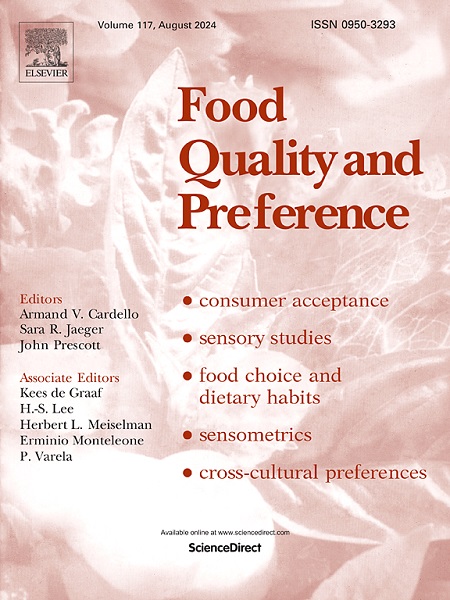Reducing meat consumption using a diet-related written prompt and the Swiss food pyramid: A field study
IF 4.9
1区 农林科学
Q1 FOOD SCIENCE & TECHNOLOGY
引用次数: 0
Abstract
Current levels of meat consumption in developed countries exceed nutritional recommendations and harm the environment. A promising intervention to reduce meat consumption is prompts, that is, reminders to perform a specific behavior in a particular situation. The present study tested a written prompt combined with an adapted version of the visualized Swiss dietary recommendations ‘Swiss Food Pyramid’ in the field. The study was conducted simultaneously in two staff restaurants with a two-week baseline period followed by a two-week intervention period. Participants (n = 131) photographed their food choices in the staff restaurants using a depth camera provided. The amount of meat on their plates was estimated using the automatic volume estimation module by goFOOD™, an artificial intelligence-based automatic dietary assessment system. The results showed that participants in one staff restaurant preferred the vegetarian menu over the meat menu when exposed to the intervention, consequently reducing their meat consumption. The intervention was particularly successful among participants with a positive attitude toward environmental protection and high health consciousness. Participants who enjoyed meat for hedonistic reasons and who ate meat the most frequently were less influenced by the intervention. In the other staff restaurant, the intervention had no effect. Potential reasons are discussed in light of the different clientele of the two staff restaurants.
求助全文
约1分钟内获得全文
求助全文
来源期刊

Food Quality and Preference
工程技术-食品科技
CiteScore
10.40
自引率
15.10%
发文量
263
审稿时长
38 days
期刊介绍:
Food Quality and Preference is a journal devoted to sensory, consumer and behavioural research in food and non-food products. It publishes original research, critical reviews, and short communications in sensory and consumer science, and sensometrics. In addition, the journal publishes special invited issues on important timely topics and from relevant conferences. These are aimed at bridging the gap between research and application, bringing together authors and readers in consumer and market research, sensory science, sensometrics and sensory evaluation, nutrition and food choice, as well as food research, product development and sensory quality assurance. Submissions to Food Quality and Preference are limited to papers that include some form of human measurement; papers that are limited to physical/chemical measures or the routine application of sensory, consumer or econometric analysis will not be considered unless they specifically make a novel scientific contribution in line with the journal''s coverage as outlined below.
 求助内容:
求助内容: 应助结果提醒方式:
应助结果提醒方式:


